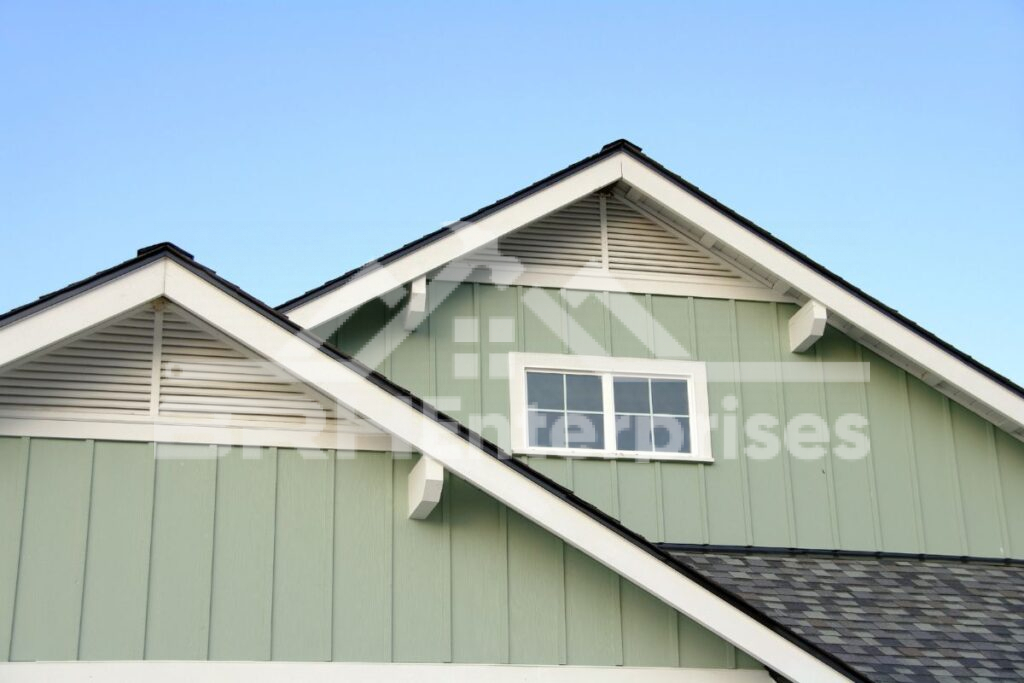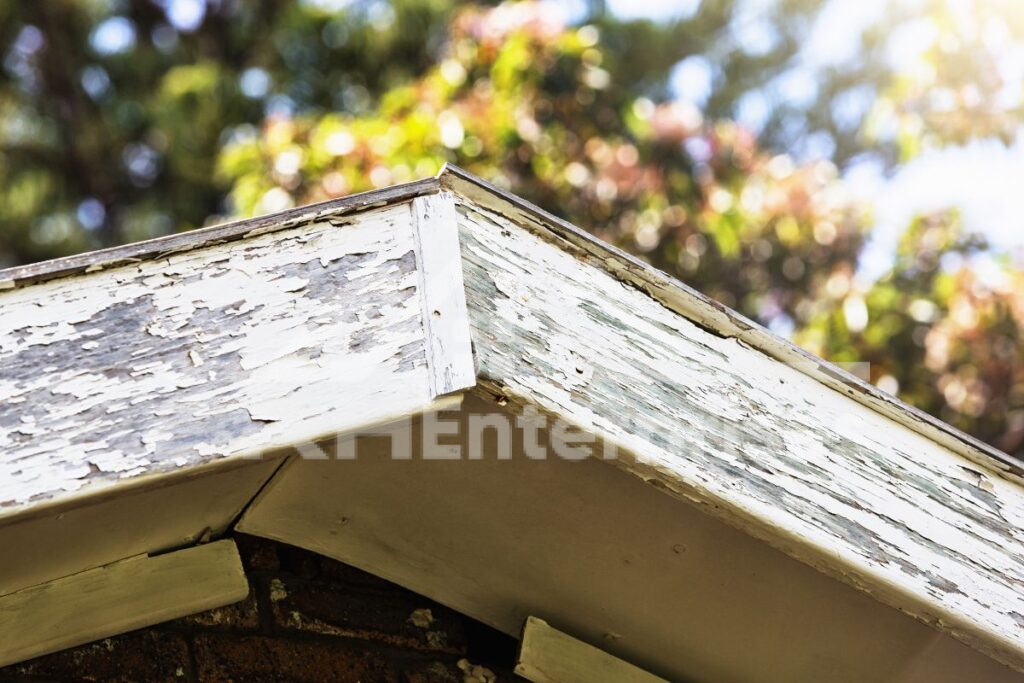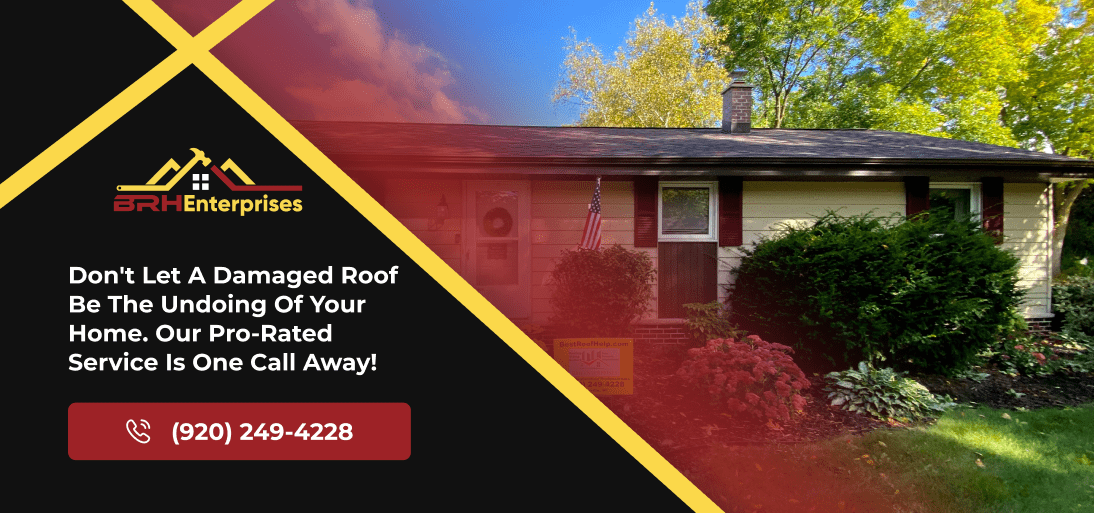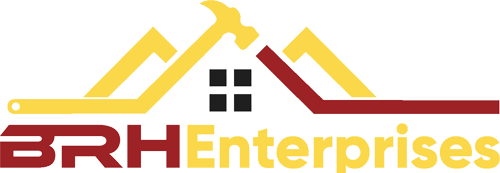How To Easily Repair Rotted Roof Eaves
Estimated Reading Time : 5 Min.

Even though they might not seem like much, roof eaves are an important part of your home’s exterior because they keep the structure intact and shield it from water damage. Unfortunately, until issues like rotted wood appear, these crucial elements are frequently ignored. That is why in this blog post, we’ll go over the simple methods for fixing rotted roof eaves so they can continue to protect your home for many years to come.
Why Replacing Rotted Eaves is Better than Repairing Them
When dealing with decayed eaves, choosing replacement over repair is often wiser for several reasons. Repairing extensively rotted eaves may only address surface issues, leaving underlying problems unresolved. Replacing them entirely ensures a comprehensive solution, preserving the building’s structural integrity. Moreover, it proves more cost-effective in the long run, as you can avoid recurring expenses and hidden costs associated with repairs. Additionally, new eaves enhance aesthetics and functionality, providing better protection against water damage and pests.
Also Read: Why You Should Pay Attention To The Roof Eave?
How To Replace Damaged Roof Eaves
Instead of repairs, replacing rotted roof eaves is a much better way to safeguard your home against water damage and structural issues. Here’s a guide on how to tackle this task effectively:

#1. Assessment and Preparation
- Thorough Inspection: Begin by carefully assessing the extent of the eave rot, checking for signs of water damage, mold, or weakened areas.
- Gather Materials: Collect all the necessary materials and tools, including new eave boards, nails, hammer, saw, and safety gear like gloves and goggles.
- Prioritize Safety: Equip yourself with proper safety gear and ensure stable ladder placement before commencing work to prevent accidents.
#2. Remove the Damaged Eaves
- Gentle Demolition: Use a pry bar or hammer with caution to dismantle the rotted eave boards, taking care not to cause further harm.
- Inspect Surrounding Areas: Check adjacent structures for any additional damage that also requires repair to address all issues comprehensively.
#3. Replace the Eave Boards
- Precision Cutting: Measure and cut new eave boards accurately using a saw.
- Secure Installation: Affix the new eave boards firmly in place using nails or screws, ensuring proper alignment and levelness for structural integrity.
- Seal Joints: Apply waterproof sealant or caulk to seal joints between eave boards to prevent water penetration and enhance durability.
#4. Painting and Finishing
- Prime for Protection: Apply a primer to the new eave boards to shield against moisture and enhance paint adhesion.
- Paint Application: Use high-quality exterior paint and apply multiple coats to achieve a durable finish that enhances your home’s appearance.
- Ongoing Maintenance: Regularly inspect and maintain the eaves to prevent future rot and prolong the roof’s lifespan, ensuring lasting protection.
#5. When to Call for Professional Assistance
- Complex Situations: For extensive damage or if you have any uncertainty, consider hiring a professional roofer to ensure correct and efficient repairs.
- Expert Consultation: Seek guidance from professionals on suitable materials and techniques for your specific needs for optimal repair outcomes.
What Are Common Issues That Require Roof Eave Repair?
Before trying to repair roof eaves, it is important that you first understand the different issues that can lead to eave damage.
#1. Rotten Fascia Boards or Soffit

Long-term exposure to moisture, usually brought on by blocked gutters or insufficient ventilation, often results in rot in fascia boards or soffits. In addition to weakening the eaves, rotting wood gives pests like rodents and insects entry points. It is essential to treat fascia board or soffit rot as soon as possible in order to stop additional structural damage and keep the area free of pests.
#2. Missing Drip Edge Flashing
Water can seep in where drip edge flashing is missing along the roof’s eaves. This may cause water damage to the roof’s underlying structure in addition to the eaves themselves, leading to mold growth and decay, as well as possibly jeopardizing the structural integrity of the entire roof.
#3. Excessive Overhang
Water drainage problems can also arise from excessive overhang at the roof eaves. The rot of the fascia boards and eaves can result from water dripping behind the gutters because of this overhang. Additionally, mold growth and the attraction of pests that prefer damp environments can result from this excess moisture. Maintaining a sound roof structure requires careful overhang management.
#4. Poor Maintenance
Ignoring routine roof eave maintenance can make pre-existing problems worse. If not properly maintained, small problems can become larger issues requiring expensive repairs. Prolonging the roof’s lifespan and preventing common roofing issues can be achieved by scheduling professional inspections on a regular basis and taking prompt care of maintenance tasks.
#5. Shrinkage
Roofing materials may shrink over time as a result of exposure to varying weather and temperatures. The roof may become more prone to leaks and water infiltration as a result of these shrinkage-induced gaps between roofing materials. Frequent maintenance and inspections can help spot shrinkage early on and take care of it before it worsens and becomes a bigger problem.
How Much Does Replacing Roof Eaves Cost In Wisconsin?
The expense of replacing roof eaves in Wisconsin can change based on the extent of damage and the materials used. Typically, homeowners invest between $460 and $1,300 for eave replacement. Nationally, the average cost is approximately $900 for replacing wooden soffit and fascia.
It’s important to note that costs can vary significantly, ranging from $180 for minor repairs to as much as $9,000 for extensive replacements. The average roof eaves repair cost per linear foot ranges from $15 to $30, considering both materials and labor, depending on the specific part being replaced. Additionally, the average price for repairing eaves falls between $6 and $20 per linear foot, depending on the nature of the repair needed.
Is It Possible To DIY Roof Eave Repair Without Professional Help?
Though it is technically possible to attempt roof eave repair without professional assistance, hiring an expert is usually safer and more efficient. Correct handling of structural elements and working at heights are crucial aspects of roof eaves repair that can present safety risks. Experts can carry out repairs safely and accurately, reducing the chance of mishaps or additional damage because they have the knowledge, experience, and equipment needed. Furthermore, they can offer precise evaluations and suitable remedies, which could ultimately result in time and cost savings. When it comes to guaranteeing a successful and secure roof eave repair, hiring professionals is frequently the better option.
Conclusion
Replacing rotted roof eaves may seem daunting, but with the right tools, materials, and expertise, it can be straightforward. However, for the best results and peace of mind, consider enlisting professional services. With their expert assistance, like that provided by BRH Enterprises, you can rest assured that your roof eaves will be expertly restored, safeguarding your home against water damage and structural issues.
BRH Enterprises offers comprehensive roofing services, including roof eave maintenance, installation, and replacement. Our experienced, licensed, and insured team has been providing high-quality services for years. Whether you’re in Mayville, WI, or the surrounding areas, BRH Enterprises is the top choice for roofing, siding, and gutter needs. Give us a call at (920) 249-4228.


